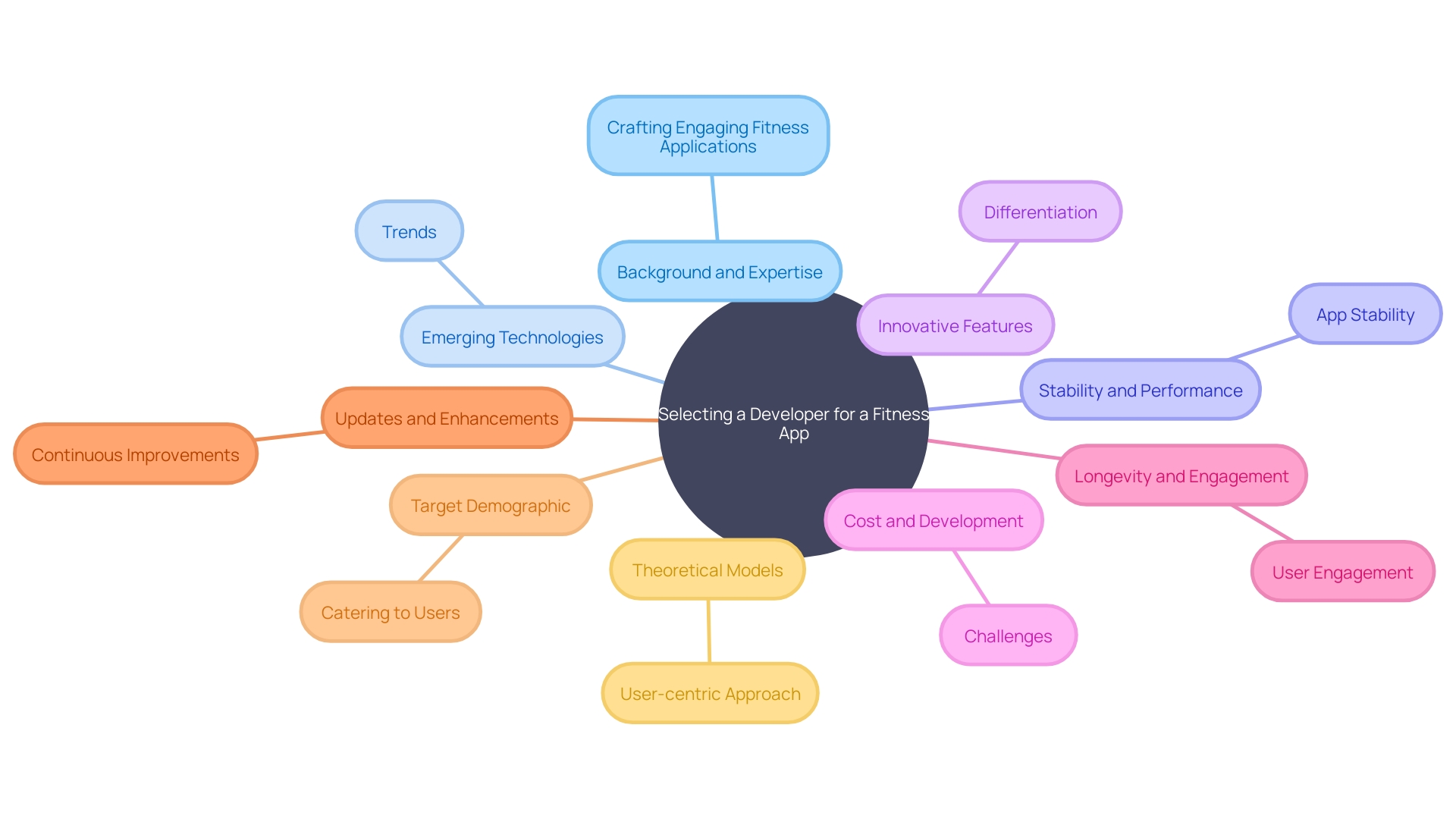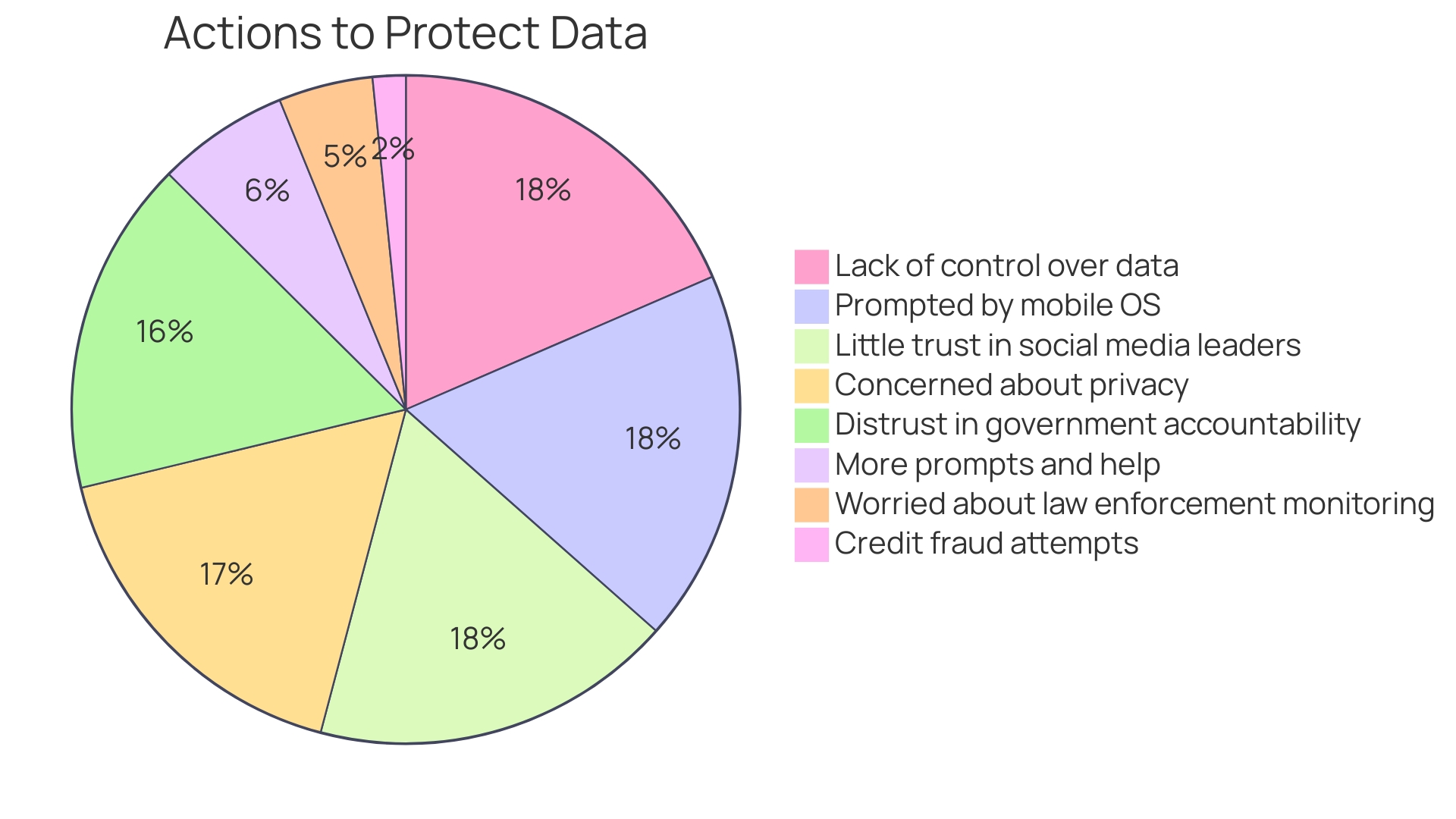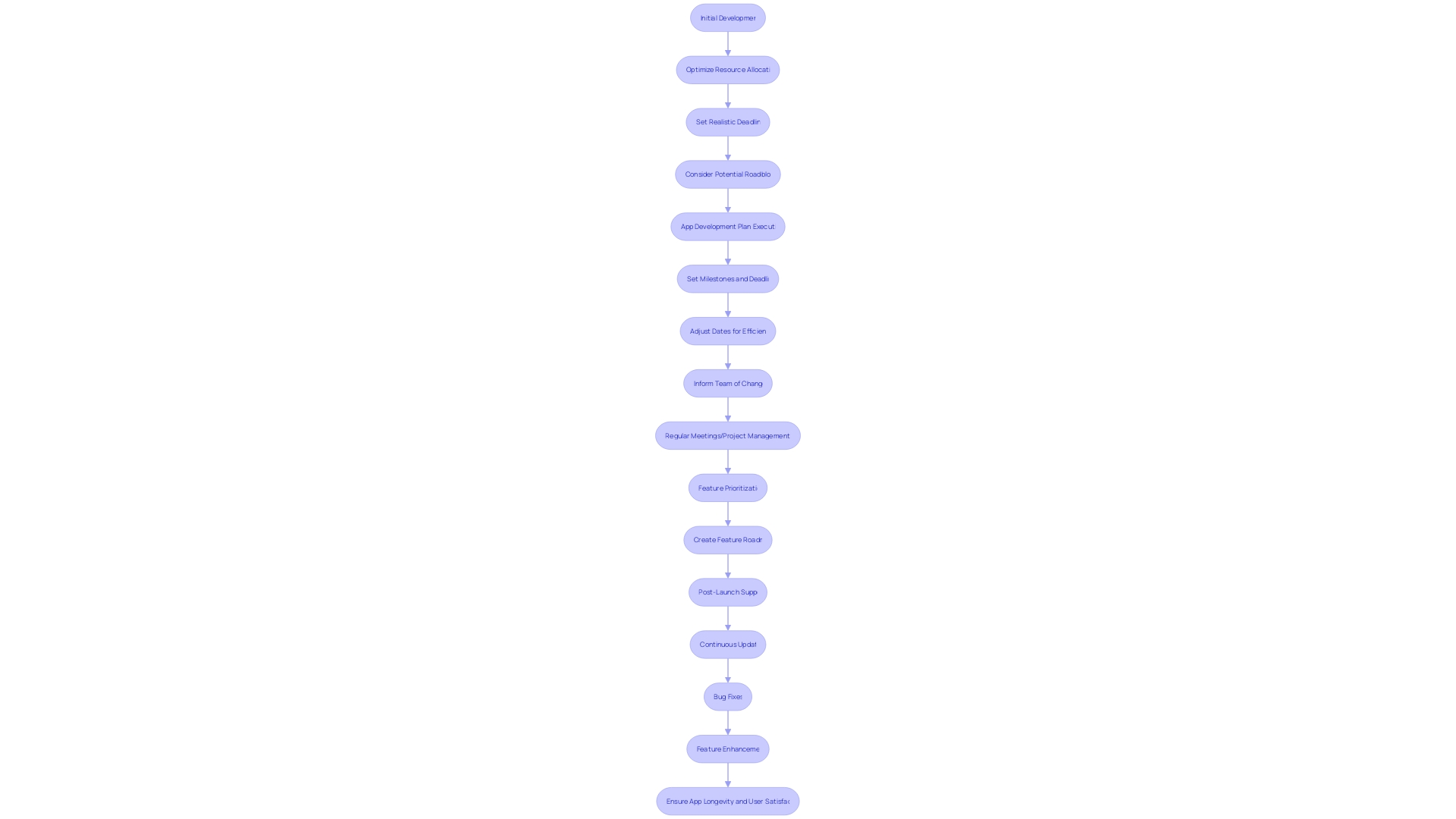Introduction
In the realm of fitness app development, selecting the right developer is crucial for the success of your project. The ideal developer should not only have expertise in crafting engaging fitness applications but also be forward-thinking, embracing emerging technologies and trends.
This article explores various aspects to consider when choosing a fitness app developer, including their portfolio and case studies, user experience and design, integration with wearable devices, data security and privacy, and ongoing support and maintenance. By delving into these areas, you'll be able to make an informed decision and ensure that your fitness app stands out in a competitive market.
Expertise in Fitness App Development
Selecting a developer for your fitness app is a critical decision that can determine the success of your project. The ideal developer will not only have a background in crafting engaging fitness applications but will also be forward-thinking, embracing emerging technologies and trends. As seen with Tapps Games, stability and performance are paramount, especially when introducing new features.
This approach ensures users enjoy a seamless experience, a lesson that's equally applicable to fitness app development. In the ever-growing fitness app market, differentiation is key. Consider Litesport's success, where the integration of Snapdragon technology enabled immersive, personalized AR fitness experiences.
This kind of innovation can set an app apart, offering live feedback akin to personal coaching, which can be a game-changer for users. Furthermore, the cost and challenges of developing a fitness app are significant considerations, but the benefits are undeniable. Apps like MyFitnessPal and Crumb have demonstrated the potential for longevity and user engagement, with Crumb's unique reward system incentivizing fitness through local business access.
Genopets' move-to-earn model is another example of how fitness apps can capture the market by rewarding physical activity in novel ways. Lastly, it's essential to note that the fitness app landscape is not static. The key to longevity lies in continuous updates and enhancements to keep users engaged over time.
With the majority of fitness app users being women averaging 30 years old, developers must cater to this demographic while also considering the broader audience. The use of apps across various age ranges and the focus on fitness and health aspects highlight the diverse appeal of these applications. Theoretical models like TAM and UTAUT guide the development process, ensuring a user-centric approach that aligns with the intention to use sports applications, as indicated by recent research trends.

Portfolio and Case Studies
When scouting for a fitness app developer, it's crucial to delve into their previous creations and gauge the caliber of their work. With smartphones being nearly ubiquitous, mobile apps have a vast potential audience, and the app stores take on a significant role in distribution and marketing. Thus, a developer's track record can speak volumes.
For instance, Tapps Games, with their extensive portfolio of over 400 games and a monthly active user base of 11 million, exemplifies the importance of maintaining high performance and stability in their offerings. Study their apps like Vlogger Go Viral, My Boo, and My Virtual Pet Shop to understand how they balance adding new features while ensuring core system stability. Furthermore, the recent surge in fitness app usage, with studies showing a significant increase in the intention to use sports applications, highlights the importance of selecting a developer who can tap into this growing market.
In 2022 alone, there was a notable peak in related publications, indicating the market's dynamism. Analyze the developer's ability to cater to a diverse and expanding user base, which in the sample of studies averaged 791.1 participants, predominantly fitness users and community members. Examine the design, functionality, and user experience of the fitness apps in the developer's portfolio, paying special attention to how the features they've implemented could serve your app's objectives.
Look beyond the surface and consider the insights from customer feedback, as this can reveal areas where your app could excel. Remember, as stated by industry insiders, success in app development requires time and iterations, and a well-chosen side project could lead to significant downloads and revenue, as evidenced by the 7 Minute Workout app's initial 300k downloads in a single week. Therefore, a developer with a proven ability to innovate and adapt can be a valuable asset in your fitness app's journey to market success.
User Experience and Design
The fusion of art and technology in app development is epitomized by the creation of intuitive and visually engaging fitness applications. To captivate the fitness enthusiast's heart, one must delve into the realm of user-centered design.
The app's interface should not only dazzle with aesthetic appeal but also offer a streamlined pathway for users to navigate their fitness journey with ease. A developer with a keen eye for such detail understands that simplicity in use, as highlighted by the research of Venkatesh and others, equates to user-perceived value.
As Cho and Kim (2015) and Liu et al. (2017) suggest, an app's ease of use propels continued engagement, and Lin et al.
(2020) note that users' efforts in learning to navigate an app directly affect their likelihood to advocate for it. In crafting a fitness app, one must tailor the design to resonate with the target audience.
For instance, an app aimed at 16-25-year-olds might embrace a vibrant and contemporary style, while one for 40-59-year-olds could opt for simplicity and ease. Wireframes serve as a skeleton, guiding the placement of elements without the distraction of color or intricate details. Clear messaging and recognizable visual elements are paramount, ensuring users can interact with the app with confidence and ease. The importance of trust cannot be overstated, as Google Design emphasizes, where users must believe in the accuracy and security of their data. With a staggering uninstall rate of over 50% within the first 30 days, highlighted by our data, the imperative is clear: deliver on promises and exceed expectations. This approach not only draws users in but also fosters a long-term relationship, essential as we consider the evolving landscape of fitness metrics and technology.
Integration with Wearable Devices
As the fitness industry evolves, wearable devices are not just trendy accessories but vital tools for enhancing workout experiences. Fitness trackers and smartwatches, for instance, have revolutionized how users monitor their health metrics, providing real-time data like heart rate and distance covered.
This data, categorized into instantaneous readings and interval-based summaries, informs users about their current state and the achievement of set goals. For example, an app can alert a user when they've run their target distance, or passively track when they've reached a step milestone.
When selecting a fitness app developer, it's crucial to assess their expertise in integrating apps with wearable technology. With standardized platform computations ensuring data consistency and the ability to create activity-aware experiences, developers can tap into a continuous stream of health data from multiple device sources.
The Health Services API's uniformity across Wear 3+ devices simplifies app maintenance and enhances user engagement. Recent developments in wearable tech, like the award-winning Garmin Venu 3 and Apple's Series 9 with gesture tracking, highlight the industry's rapid innovation. The successful integration of smartwatch capabilities and fitness guidance, as seen in Google's acquisition of Fitbit, underscores the importance of a seamless blend of performance and health insights. Therefore, a developer's ability to harness the potential of wearables can significantly personalize and elevate the fitness app experience.
Data Security and Privacy
In the realm of fitness app development, safeguarding user data is paramount. With the proliferation of activity trackers and health apps, users are increasingly cautious about where they share their sensitive health and workout data. To ensure the integrity and confidentiality of this information, it's essential to partner with a developer who not only understands the nuances of data security but also actively enforces robust protection measures.
The ideal developer will implement state-of-the-art data encryption, secure storage solutions, and safe data transmission protocols. Moreover, compliance with stringent data protection laws, such as GDPR, is non-negotiable. A recent case underscores the gravity of data privacy: Glow, a fertility app, suffered a security breach that resulted in personal data exposure and a substantial fine for the company.
This incident highlights the necessity for developers to treat user privacy with the utmost seriousness and adopt a DevSecOps approach, integrating security throughout the app development lifecycle. With 79% of people taking at least one action to protect their data this year, the demand for secure apps is evident. Developers must rise to the challenge and prioritize user trust by delivering fitness apps that not only inspire active lifestyles but also champion data privacy.

Ongoing Support and Maintenance
When you're ready to bring a fitness app to market, it's not just about the initial development; it's about committing to a process that continues well after launch day. A developer who provides ongoing support and maintenance is critical for the app's longevity.
This includes regular updates to keep pace with new operating systems and devices, quick bug fixes, and incremental feature enhancements to keep users engaged. A dedicated support team is essential to address any post-launch issues promptly, ensuring users can rely on your app for their fitness journey.
Maintaining high-quality standards and a seamless user experience is crucial for the success of your fitness app. With the rapid pace of technological change, it's vital to ensure that the app does not become obsolete or riddled with issues that could deter users.
Continuous improvement is not just a technical necessity but a strategic approach to retain and grow your user base. It signals to your customers that you are dedicated to providing a product that evolves with their needs and the digital landscape.
Moreover, a robust fitness app should integrate seamlessly with other devices and apps, such as wearables and nutrition trackers, giving users a comprehensive health and fitness platform. With a variety of workouts and progress tracking, users can stay motivated and informed about their health journey. Community support within the app can also foster a sense of belonging and motivation, which is especially beneficial for those seeking encouragement and accountability. In a fast-growing market where users are looking for apps that not only fit their active lifestyle but also offer reliability and a positive user experience, ongoing support and maintenance become the pillars of a successful fitness app. They ensure that the app remains a valuable tool for users looking to maintain or improve their health and fitness levels, regardless of their location or schedule.

Conclusion
In conclusion, selecting the right fitness app developer is crucial for success. Look for a developer with expertise in crafting engaging apps and embracing emerging technologies.
Consider their portfolio, user experience and design, integration with wearable devices, data security, and ongoing support. Evaluate the developer's portfolio to gauge their performance and ability to cater to a diverse user base.
Prioritize user experience and design, ensuring a visually engaging and intuitive interface that resonates with your target audience. Integration with wearable devices enhances the workout experience.
Choose a developer who can seamlessly integrate your app with wearable technology, tapping into real-time health data from multiple sources. Data security is paramount.
Partner with a developer who implements robust protection measures and complies with data protection laws, ensuring the integrity and confidentiality of user information. Ongoing support and maintenance are essential for the longevity of your app. Select a developer that provides regular updates, bug fixes, and has a dedicated support team to address any post-launch issues promptly. By considering these factors when choosing a fitness app developer, you can create an app that stands out in the competitive market. Embrace innovation, prioritize user experience, safeguard data privacy, and provide ongoing support to ensure your app's success in helping users achieve their health and fitness goals.





